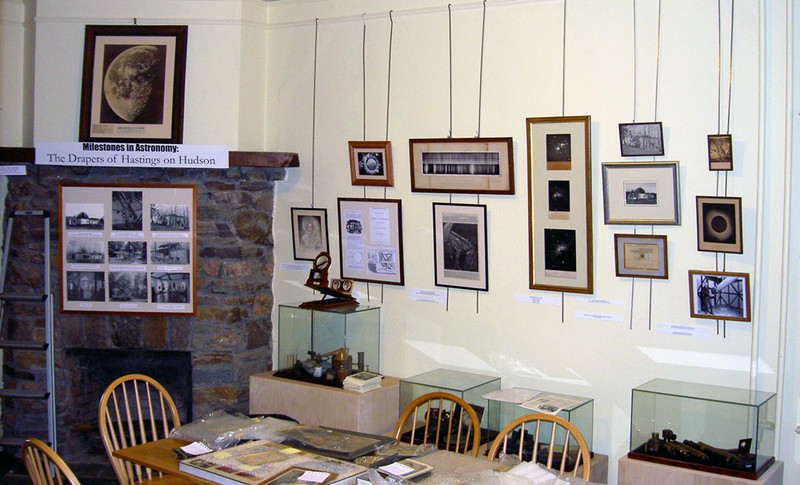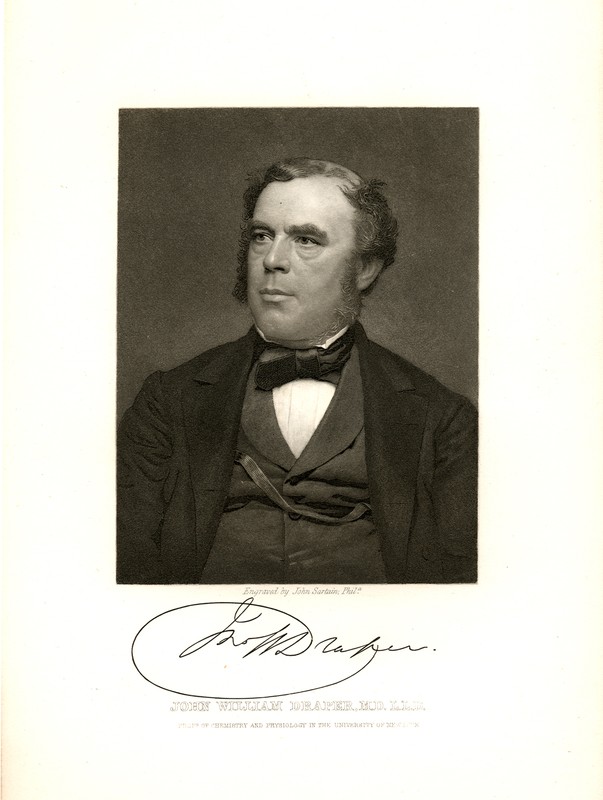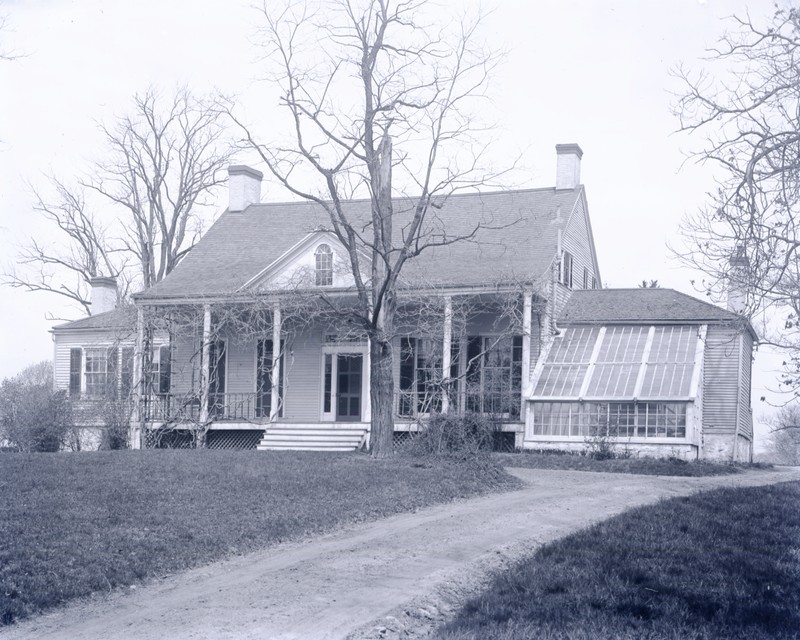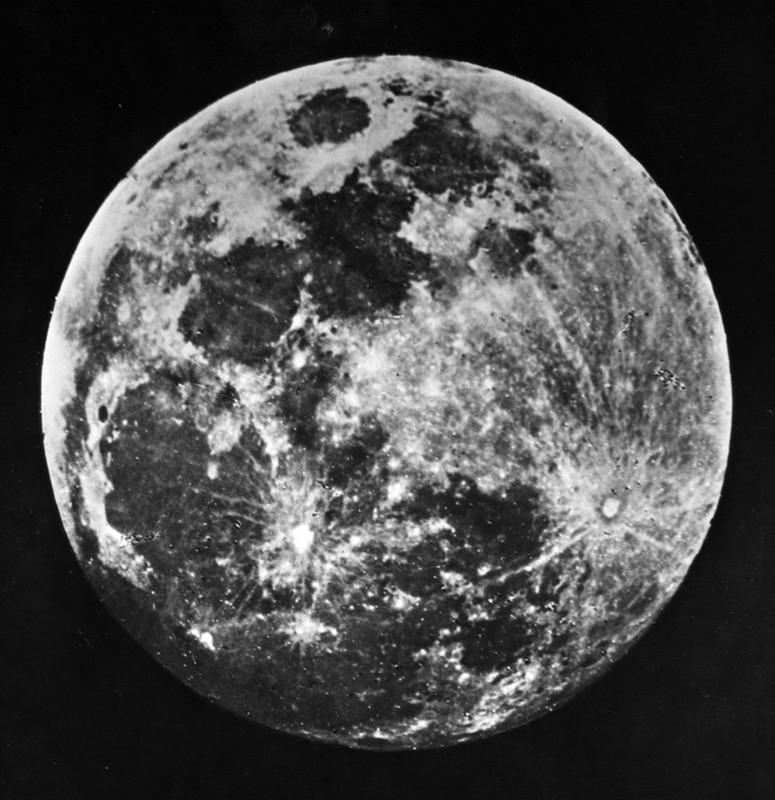John William Draper Cottage
Introduction
Text-to-speech Audio
Images
Hastings Historical Society Exhibit on Astrophotography

Engraving of John William Draper

John William Draper Cottage

One of the first photographs of the Moon taken by John William Draper - 1840

Backstory and Context
Text-to-speech Audio
John William Draper, son of a Wesleyan minister of moderate means, was born in 1811 in England. From a young age he showed promise as a student of science, being first tutored at home and later admitted to public school. Unfortunately, the death of his father in 1831 cut his pursuit of education short and he accepted a certificate of honors in chemistry in lieu of a degree. At the urging of relatives who had founded a Wesleyan colony in Virginia prior to the American Revolution, he immigrated to Christianville, VA (now Chase City) in 1833. Before leaving England though, he published two scientific papers with a Fellow from the Geological Society named William Mullingar Higgins.
At his home in Christianville, John Draper established a private laboratory to continue his scientific explorations. He published work on galvanic batteries, the magnetic action of light, and an analysis of native chloride in carbon and ancient coins and metals. In 1833, his sister Dorothy Catherine, a schoolteacher, funded his return to education and he enrolled in medical school at the University of Pennsylvania. He graduated in 1836 with his thesis on glandular action continuing work on capillaries that he began in his private lab years before.
In the mid-1800s, when photography was still a relatively new field, John William Draper became a pioneer in the field. He began by making technical alterations a daguerreotype which he used to take a portrait of his sister Dorothy Catherine in 1840. During the winter of 1839-1840, Draper continued his photographic work by photographing the moon. Throughout the experiment he created numerous photographic negatives which yielded the first detailed photograph of the moon. Draper's groundbreaking work launched the modern field of astrophotography.
In 1847, Draper moved to Hastings-on-Hudson where he built his estate. Within a few years, his second son, Henry, then in his early teens, was assisting his father in his scientific studies. In time, Henry Draper became renowned in his own right as a doctor and astronomer. Like his father, he also became a pioneering figure in the field of astrophotography, amassing over 1,500 negatives of the moon above their Hastings estate.
In the late 1850s, Henry Draper became inspired to build an observatory following a trip to Ireland and a visit the famous “Leviathan” observatory of the Earl of Rosse, the largest telescope of the 19th-century. He believed that the highest point on his father's Hastings estate would be an ideal location for an observatory. He worked with his brother Daniel to build the observatory and a custom-made telescope which was completed in 1860.
John William Draper continued his scientific career until chronic illness led to his death in 1882. By that time, he had become the founding president of the American Chemical Society and the American Union Academy of Literature, Science, and Art, and had published over fifty scientific papers and a dozen books.
The village of Hastings acquired the cottage and observatory in 1990. Since that time, the observatory has housed the Hastings Historical Society.
Cite This Entry
Woodham, Rebecca and Brendan Murphy on behalf of Westchester County Historical Society. "John William Draper Cottage." Clio: Your Guide to History. September 9, 2020. Accessed March 27, 2025. https://theclio.com/tour/1673/4
Sources
The Editors of Encyclopaedia Britannica. 2020. “William Parsons, 3rd Earl of Rosse.” Encyclopædia Britannica. Encyclopædia Britannica, inc. June 13. https://www.britannica.com/biography/William-Parsons-3rd-earl-of-Rosse.
“Opening April 26th ‘Milestones in Astronomy: The Drapers of Hastings.’” 2009. Hastings Historical Society. Hastings Historical Society. April 20. http://hastingshistoricalsociety.blogspot.com/2009/04/opening-april-26th-milestones-in.html.
“Opening April 26th ‘Milestones in Astronomy: The Drapers of Hastings.’” 2009. Hastings Historical Society. Hastings Historical Society. April 23. http://hastingshistoricalsociety.blogspot.com/2009/04/opening-april-26th-milestones-in_22.html.
“Village History.” 2019. September 3. https://hastingshistoricalsociety.org/village-history/.
Williams, Gray. 2003. Picturing Our Past: National Register Sites in Westchester County. Elmsford, NY: Westchester County Historical Society.
Wisniak, Jaime. 2013. “John William Draper.” Educación Química 24 (2): 215–23. doi:10.1016/s0187-893x(13)72465-0.
Hastings Historical Society
Hastings Historical Society
Hastings Historical Society
Time Magazine - https://time.com/3805947/the-first-photograph-of-the-moon/

